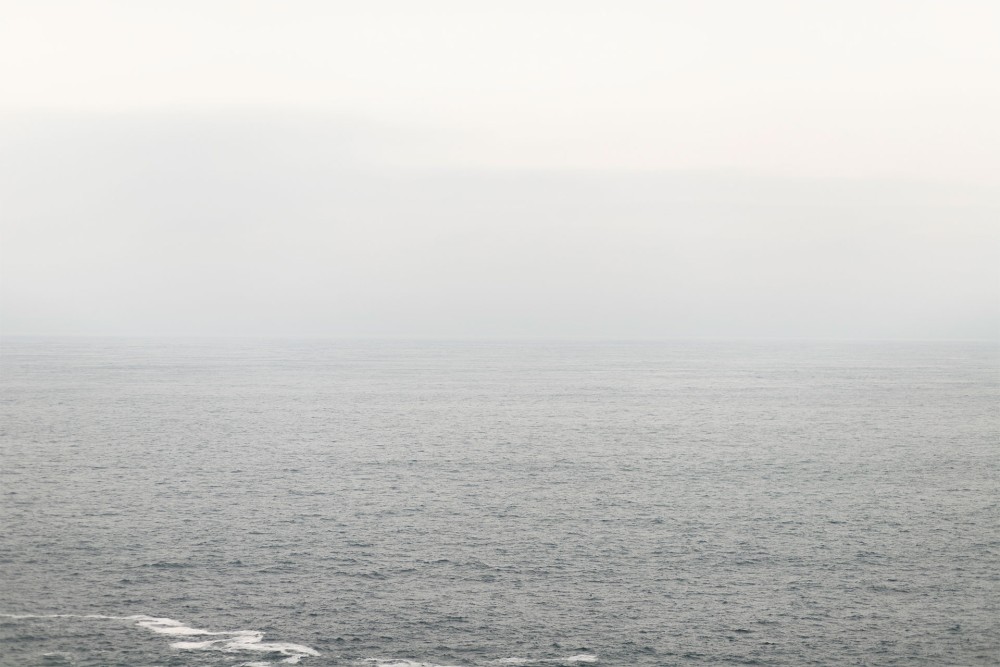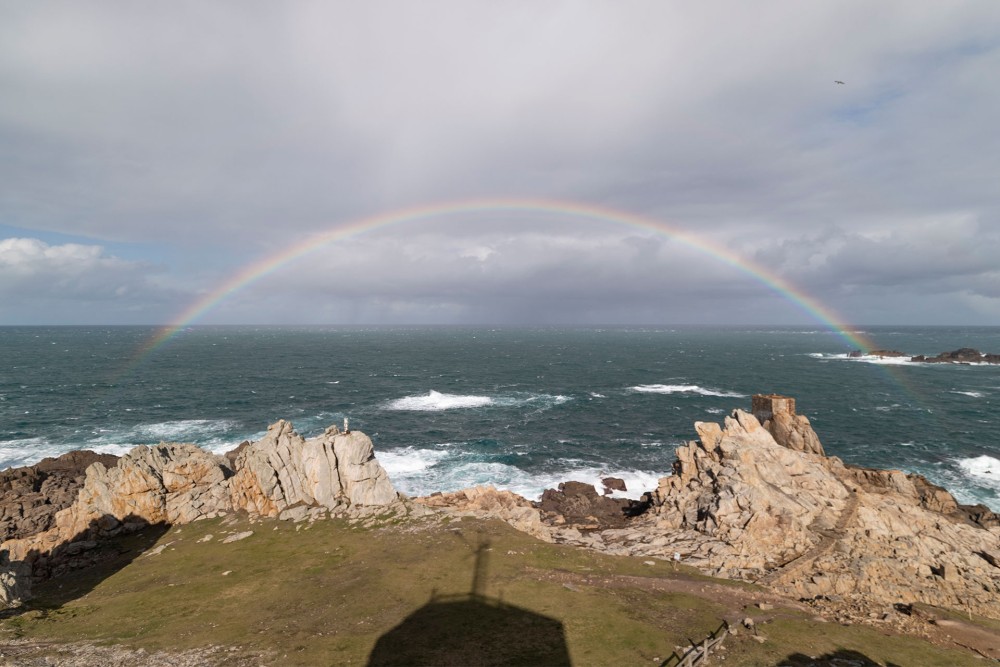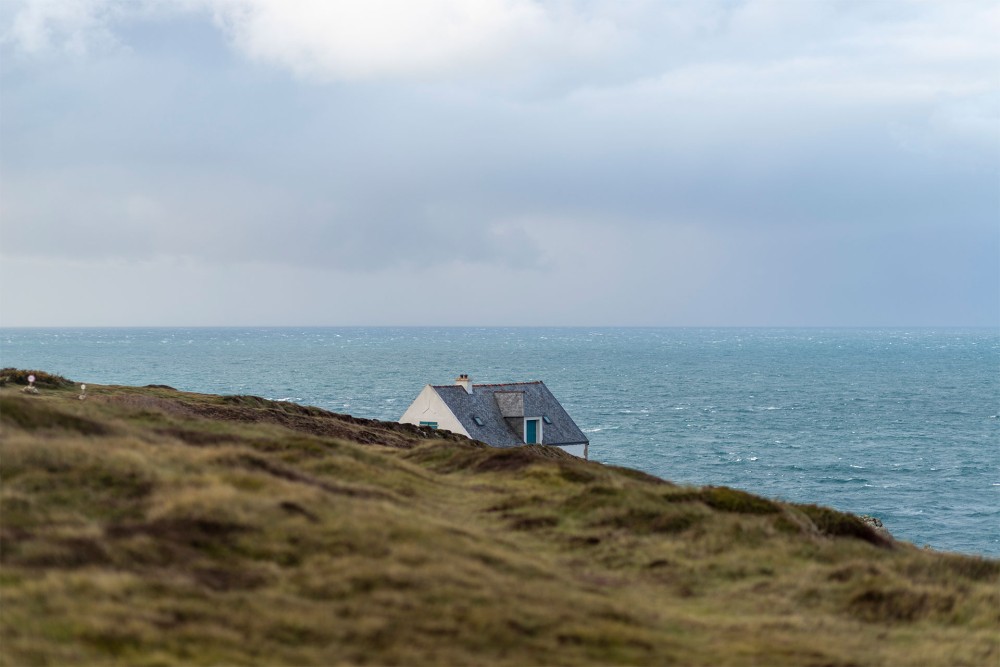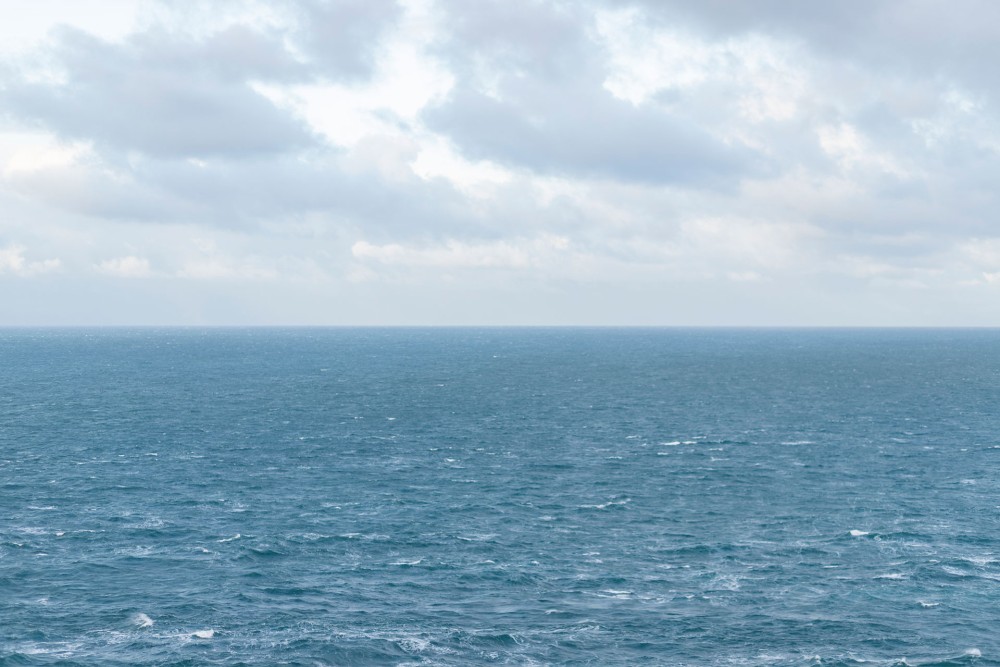Princia Itoua
Résidence sémaphore #33
A retreat residency, linked to the context of the Créac’h lighthouse on the island of Ouessant.
Ouessant























Résidence sémaphore #33
A retreat residency, linked to the context of the Créac’h lighthouse on the island of Ouessant.























The horizon…
The crossing of the Iroise Sea aboard Enez Eussa [1] is unique, perilous, and cinematic. The sea spray pounding the windows created an uncertainty, and the obscured view of the distant horizon carried a mystical quality. The boat left waves in its wake, rippling across the near horizon. The sea was, and remains, formidable. Indeed, “None pass Fromveur without knowing fear,” and “Who sees Molène sees their pain; who sees Ouessant sees their blood [2],” illustrating the dangers of the sea. Despite its poetry, it remains a political space embodying both current and future challenges. We are as if adrift on a raft.
This word, raft, strangely crossed my mind throughout the preparation for my residency. I wrote it everywhere. Inevitably, there are analogies to this crossing. I arrived as a Paysitant [3], a cabanant [4], and a radicant, exploring the variations of blue at sea from the perspective of the displaced [5].
When I dropped anchor at Ouessant on February 1st, I felt insignificant—much like those Germans who tried to roll the eagle of Pointe de Pern toward Lampaul [6]—powerless. Small in the face of a wild, omnipresent nature. The island remained frozen in a bygone era, one I lack sufficient knowledge to describe. The island thrived under the aegis of masterful nature, offering a journey through space and time capable of bewildering the senses. Here, there are (almost) no trees, filling me with sadness. This absence was marked by winds that swayed our bare bodies. Lost in the island’s heart, far from the marine shores, I felt an impression of wandering, yet a persistent echo reminded me constantly of the ocean’s closeness.
I had come to admire the horizon.
I stand at 48°27’35’’ N, 5°7’51’’ W, at an altitude of 20m. Between Pointe du Créac’h and the Créac’h lighthouse. Upon arrival, eager to once more behold the splendor I had glimpsed during the crossing—bringing back memories of a happy childhood bathed in the call of the sea—I entered the watchroom for the first time, like a sentinel seeking oceanic secrets. The immensity unfolded before me, filling my body but overwhelming it at the same time, incapable of containing such a flood of grandeur. The swirling, powerful waves only reinforced my humility before the majesty of the ocean.
At night, the silhouette of the semaphore advancing into the dark blue gave me chills. One quickly feels alone. Facing an endless horizon, waves hammering the rocks create an imperious, constant, and unsettling oceanic symphony that envelops the mind with a feeling at once soothing and brimming with raw energy. Their ceaseless sound plunged me back into memories of the crossing—a resonance box, a motor seemingly rooted deep within the earth.
Each day, I crossed the sea.
[1] The boat of the Penn Ar Bed company, but also the designation “Ouessant Island.” ».
[2] Who sees Molène sees his sorrow. Who sees Ouessant sees his blood. Who sees Sein sees his end.”.
Who sees Groix sees his cross.”
[3]The concept of the “Paysitant” focuses on current concerns about the interactions between the landscape and its inhabitants, and how each transforms the other, and vice versa.
[4]The term “Paysitant” is a portmanteau that was created as part of the concept of the “Paysitant.” It combines the words “paysan” (farmer) and “habitants” (inhabitants), reflecting the idea of a close relationship between people and the landscape, where both shape and transform each other. https://www.ateliersmedicis.fr/sites/atelier-medicis.fr/files/Princia- Itoua-Ihler-Meyer.pdf
[5] The choice of the term “displaced” in this context refers to individuals commonly labeled as “migrants” in French political discourse. Indeed, the use of the term “displaced” is less negatively connoted and allows for highlighting the primary reality of these people, which is their displacement.
[6] The choice of the term “displaced” in this context refers to individuals commonly labeled as “migrants” in French political discourse. Indeed, the use of the term “displaced” is less negatively connoted and allows for highlighting the primary reality of these people, which is their displacement.».
[7]Marcel Dinahet is a visual artist. He is the first resident of Finis Terrae and the president of the association. His work is showcased here. https://finis-terrae.fr/residents/marcel-dinahet ou ici http://www.marceldinahet.co.uk
[8] L”The new slave traders” refers directly to the slave traders in Libya. There, slavery of sub-Saharan African populations is rampant throughout the country. Some resources to find here. https://www.la- croix.com/France/Jai-ete-esclave-Libye-2020-12-06-1201128492 ; francetvinfo.fr/monde/europe/migrants/video-de-l-esclavage-en-libye-a-la-france-il-raconte-sa-vie-de-combats_4873829.html
[9] Ouessant is known as an island full of shipwrecks due to the treacherous passage of the Fromveur, which is feared by sailors. In addition, the island’s unpredictable weather adds to the danger. Indeed, the saying “qui voit Ouessant, voit son sang” (“who sees Ouessant, sees their blood”) takes on its full meaning, referring to the fog that would put ships in peril.
[10]Définition CNTRL : Tête de roche à fleur d’eau, dangereuse pour la navigation. Écueil sur lequel se brisent les vagues ; côte, mer, eaux semées d’écueils ; écueils signalés par des phares ; îles et écueils du golfe normand.
[11]Taking the train with a stop in Paris, the journey to Ouessant takes over 9 hours. This calculation includes the train ride to Brest, transfers and metros in Paris, an overnight stay in Brest or Le Conquet (in my case), and then a 1h45 ride from Le Conquet or a 2h40 boat trip from Brest to Ouessant.
[12] It is pronounced “pinsé,” and refers to pense an aod (shipwreck, anything that reaches the shore). When an object is marked by a pebble, it means that someone has claimed it, and they will come to retrieve it.